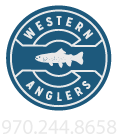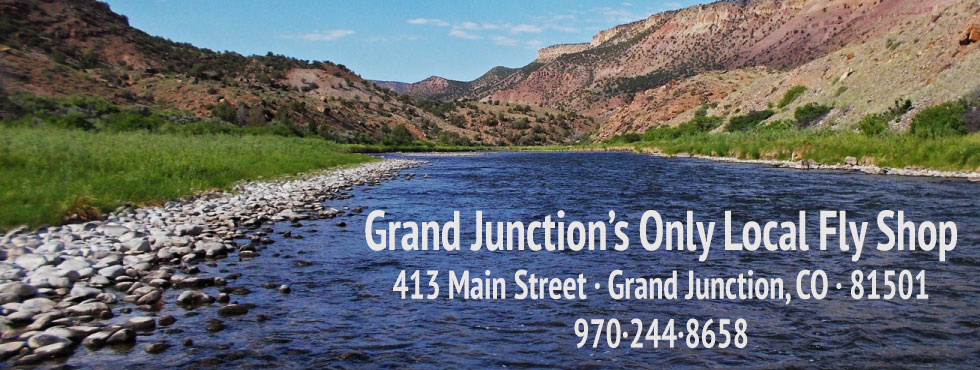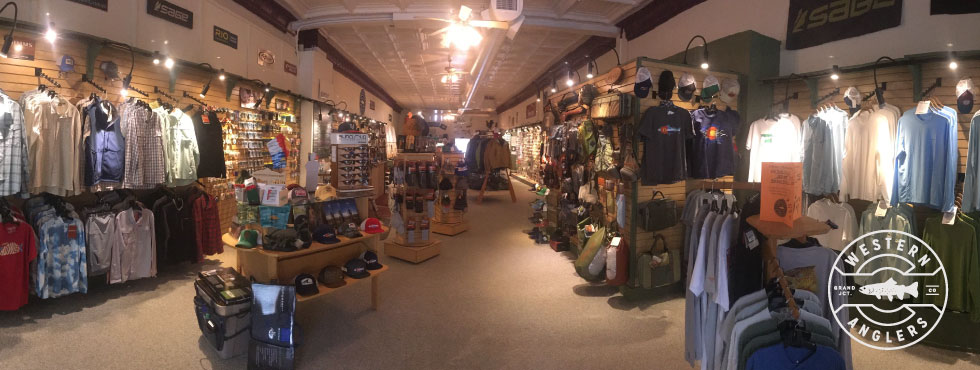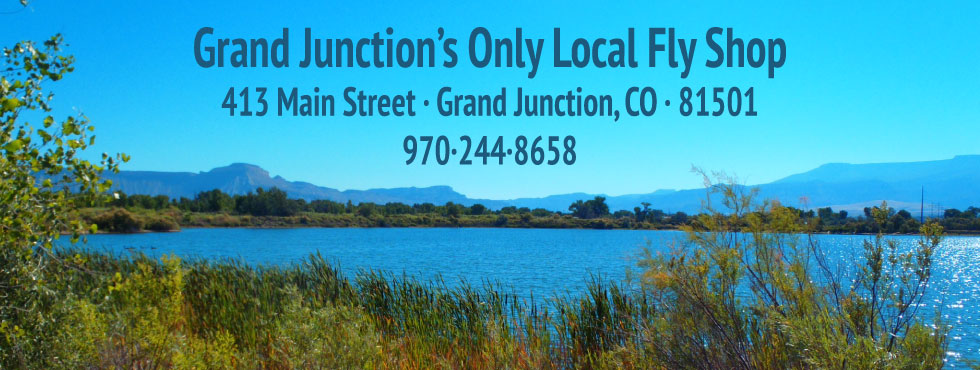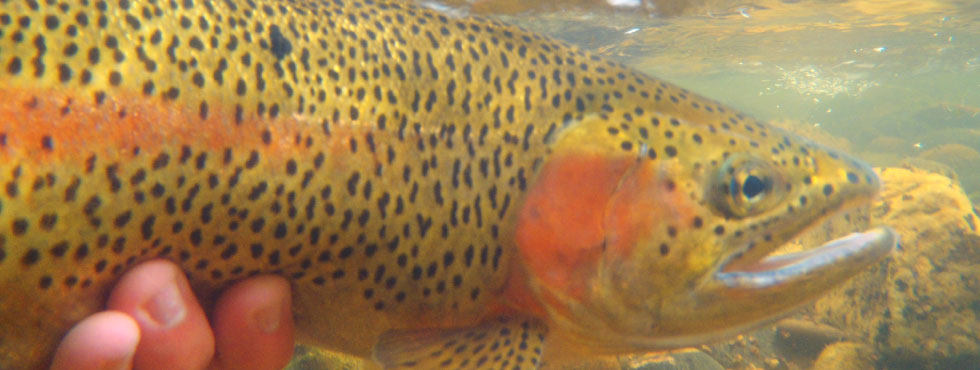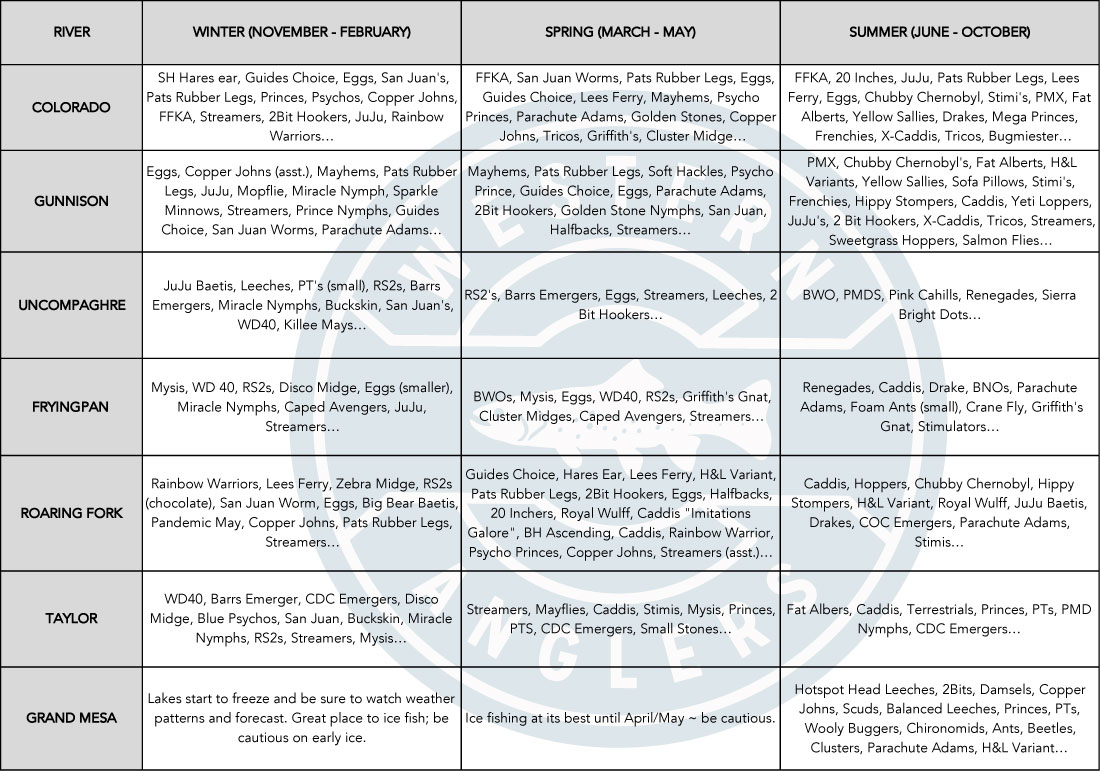Area Waters
Colorado River
We provide guide service at multiple sections between Glenwood Springs and Rifle. Call to book a trip today!
The Colorado is a 1,450 mile long river which has it’s headwaters high on the Continental Divide. While this river offers fine fishing from its headwaters down, primarily we focus on waters at Glenwood Canyon and downstream. Here, the Colorado is home to some of the best fighting fish on the west slope. There is plenty of public access for walk/wade fishing, especially in Glenwood Canyon corridor, as there is a bike path for miles and miles that follows the river. Many folks enjoy fishing the river below the canyon from a drift boat, because of the size of the river and also because of the plentiful amount boat ramps along I-70. In Glenwood Springs, Colo., the river joins with the Roaring Fork River, another fine river on the west slope, and from confluence to Silt, Colo., the river is very wide and has some stretches of white water as well as long riffles. Hatches are variable, but some noteworthy entries are the Caddis Hatch in late April, before they head up the Roaring Fork River. Salmonfly and various Stoneflies Hatches may also appear depending where on the Colorado River you fish during the months of June and July. Drift boating from Grizzly Creek all the way to Rifle on the Colorado River can often be very productive.
The Lower Colorado River’s wide and braided nature forms many back eddies which provide slow moving water, often much like a pond. Carp love this type of habitat. Carp can be caught year round in this section of the river, due to mild winters and relatively warm water temperatures in the Grand Valley. Public access is incredibly easy to find throughout the Grand Valley, especially on the River Front Trail. Within minutes of downtown Grand Junction, you can expect to find plenty of Carp to test your skills. Carp average 20-30 inches in this section of the river, however, it is not uncommon to hook up with a 35+ inch fish.
Gunnison River
The Gunnison River can be categorized into three sections: Upper Gunnison, Black Canyon, and Gunnison Gorge. The Upper Gunnison begins with the confluence of the East and Taylor Rivers in Almont, Colo., and flows with a meandering mild manner to the Blue Mesa Reservoir. This section has ample public access, with very few rapids. This section also is easily floated and fishes well year-round. The next section, the Black Canyon, begins below Blue Mesa Reservoir at the top end of the Black Canyon and continues to flow for nearly 50 miles. This section is extremely remote and virtually inaccessible with towering cliff walls. There are a few access points, such as East Portal, within the Black Canyon of the Gunnison National Park, which provides riverside access, stunning scenery, and exceptional fishing as long as the road is open (snow, mud, rocks sometimes prevent access). The Black Canyon is home to big fish and even bigger whitewater. The last section of this river is known as the Gunnison Gorge which begins near the Smith Fork confluence in the Black Canyon, and flows to Delta, Colo. This section is wide, with deep runs, long riffles and spectacular scenery. This is our home water where big fish reside. The Gunnison Gorge provides great opportunities for floating as well, we recommend to only float this section with an experienced guide. Primary access is at the Gunnison Forks Recreation area (BLM). There are four+ miles of accessible trailhead for great walk/wade fishing, most of that in wilderness area. Contact us at Western Anglers Fly Shop for a list of recommended guides or outfitters that can provide a great experience on the Gunnison River.
Gunnison River at Delta
Uncompahgre River
The Uncompahgre River begins high in the San Juans south of Ouray, Colo., and descends quickly to Ridgway Reservoir, just north of Ridgway, Colo. While trout can be found above Ridgway Reservoir, the prize of this river is at Pa-Co-Chu-Puk State Park (aka “Paco”). This section of the river has extremely easy access offering an opportunity to fish to just about all skill levels. The water coming out of the bottom of Ridgway Reservoir is notoriously frigid, aiding the healthy population of Cutthroat, Rainbow, and Brown trout living in this tailwater. There are ample public access opportunities along this river’s path to the confluence with the Gunnison River at Delta, Colo. This river fishes extremely well year round, and is known for some pretty prolific Blue Winged Olive hatches and massive Cutthroat. If you are interested in a guide service for the Uncompahgre River, come into Western Anglers or call us for more information.
Roaring Fork River
The Roaring Fork River is a tributary of the Colorado River, approximately 70 miles long. It flows northwest past Aspen, Woody Creek, and Snowmass. It’s confluence with the Fryingpan River at Basalt, then continues to flow where it joins with the Crystal River near Carbondale, Colo. The Roaring Fork continues through the town of Glenwood Springs where it then joins the mighty Colorado River.

Roaring Fork River at Glenwood Springs
Taylor River
The Taylor River flows through Taylor Park, forming Taylor Park Reservoir, just above Almont, Colo. An excellent fishery exists below the dam. The fish here are very finicky and spooked easily so bringing your “A-Game” is key. Although the trophy fish are often found up high, this is a great river to explore downstream. Special attention should be made to respecting private property. Public access is available on the river; please come into Western Anglers to learn more.

Taylor River below Taylor Park Reservoir
Fryingpan River
The Fryingpan River is a tributary of the Roaring Fork River, approximately 42 miles long. The reason for the unusual name of this river is that when a group of trappers were attacked by a band of Ute Indians, only two men survived, one of whom was injured. Leaving his wounded friend in a cave close by, the last man left to summon help, but not before hanging a frying pan in a tree so that he could find the cave again upon his return. The Fryingpan joins the Roaring Fork River below Basalt, Colo. and is fishable year-round and is famous for it’s mysis shrimp which have migrated down, through the years, from the Ruedi Reservoir above the river.

Fryingpan River near Ruedi Reservoir
Grand Mesa Lakes
Did you know we Guide on the Grand Mesa? Book A Trip Today!!!
The Grand Mesa National Forest is home to over 300 lakes and reservoirs, of which are full of trout and is just under an hour from the shop. As the world’s largest flat topped-mountain, the Grand Mesa holds spectacular views and cooler weather than the Grand Valley, often attracting many local anglers. There are many lakes and rivers some requiring good navigational skills. For detailed maps, please visit us at Western Anglers Fly Shop.
